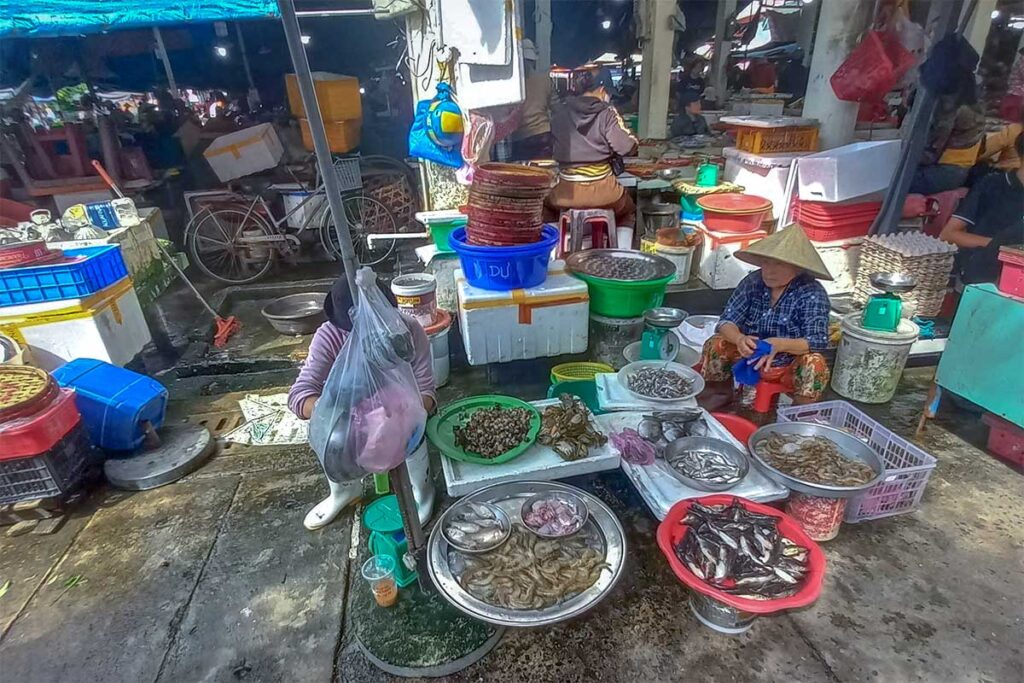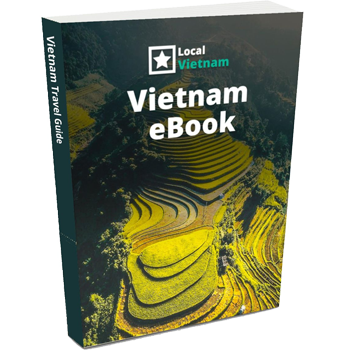Note: There is also a Tan An Market in Can Tho – read our dedicated guide if you’re searching for that one.
What is Tan An Market?
Tan An Market is a traditional daily market in Hoi An, serving as a practical shopping hub for the local community rather than a destination designed for visitors. Located about one kilometer north of Hoi An Ancient Town, it sits just outside the main tourist flow, which keeps its atmosphere authentic and unpolished.
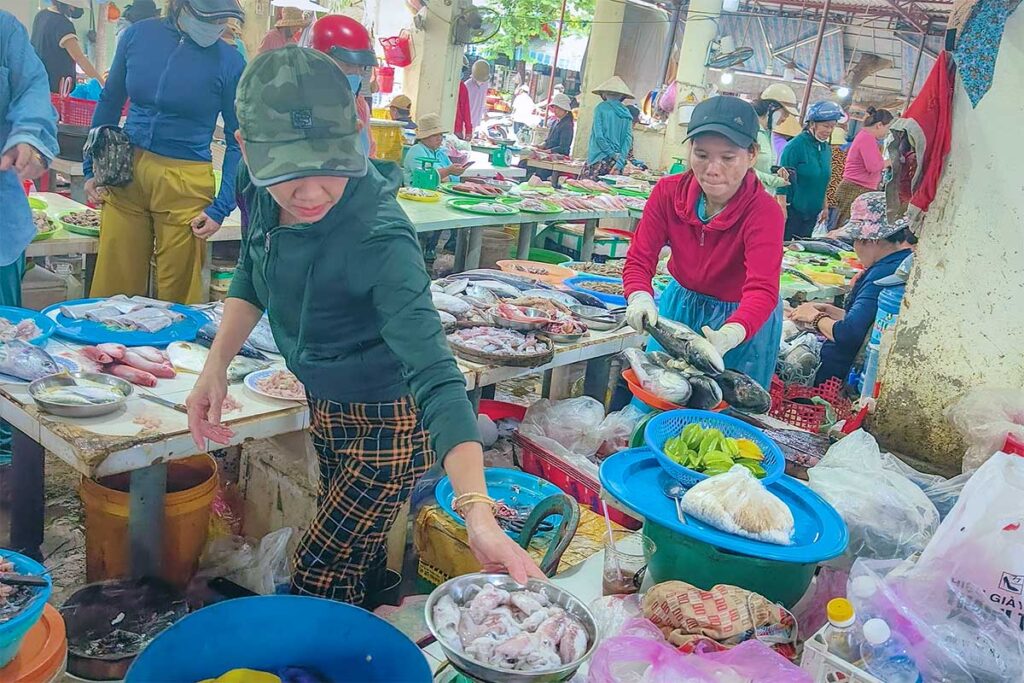
The market is also widely known as the Tiger Market (Chợ Ông Cọp), a name that comes from the nearby Ong Cop Temple, where a tiger symbol is worshipped as a protective spirit. This link between commerce and culture adds character, but the market itself has always remained primarily functional.
Its purpose is straightforward: to provide residents with fresh vegetables, fruit, meat, seafood, herbs, and everyday goods. Stalls are geared toward local needs, and the setting reflects the rhythm of daily life rather than tourism. In this way, Tan An Market showcases the continuity of Vietnamese market culture, standing in contrast to the Central Market in the Old Town, which has adapted more to foreign visitors. Here, the focus is firmly on the community, making it a window into Hoi An’s everyday reality.
Things to see at Tan An Market
Visiting Tan An Market is less about sightseeing and more about stepping into the daily routines of Hoi An residents. While the market is not large, it offers a cross-section of local life that feels very different from the curated experience in the Old Town.
1. Fresh produce and vegetables
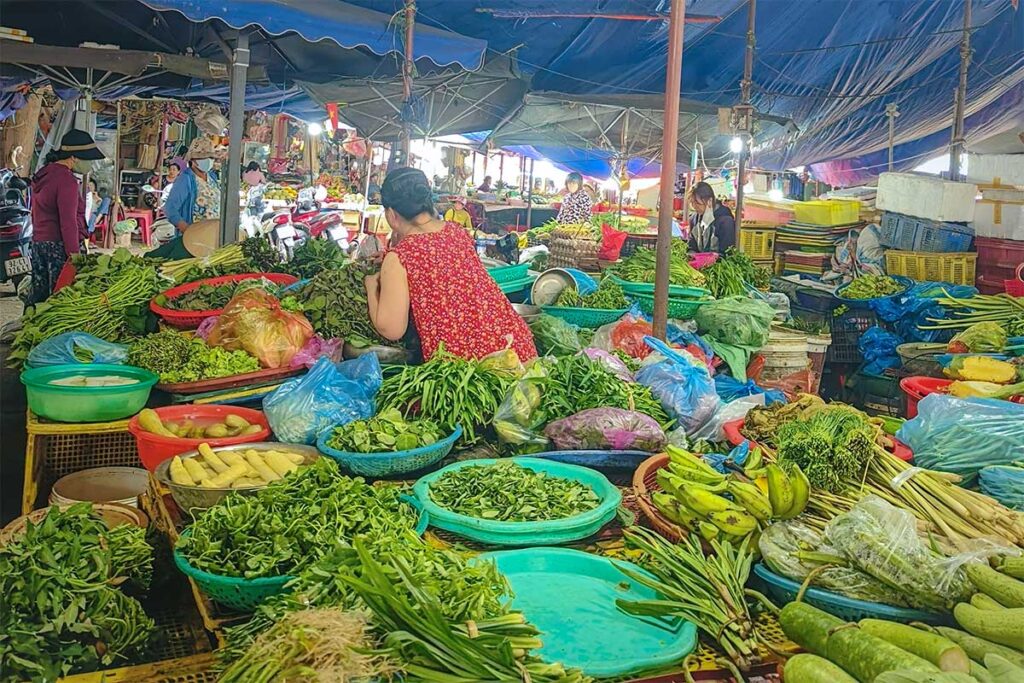
The heart of the market is filled with baskets and trays of seasonal fruits, vegetables, and fragrant herbs. You’ll find staples like water spinach, lemongrass, and morning glory, as well as more distinctive ingredients that shape Hoi An’s cuisine, such as perilla leaves, fish mint, and Vietnamese coriander. This section provides a glimpse into what locals cook at home and what you might later taste in a bowl of cao lầu or mi quang.
2. Meat and seafood stalls
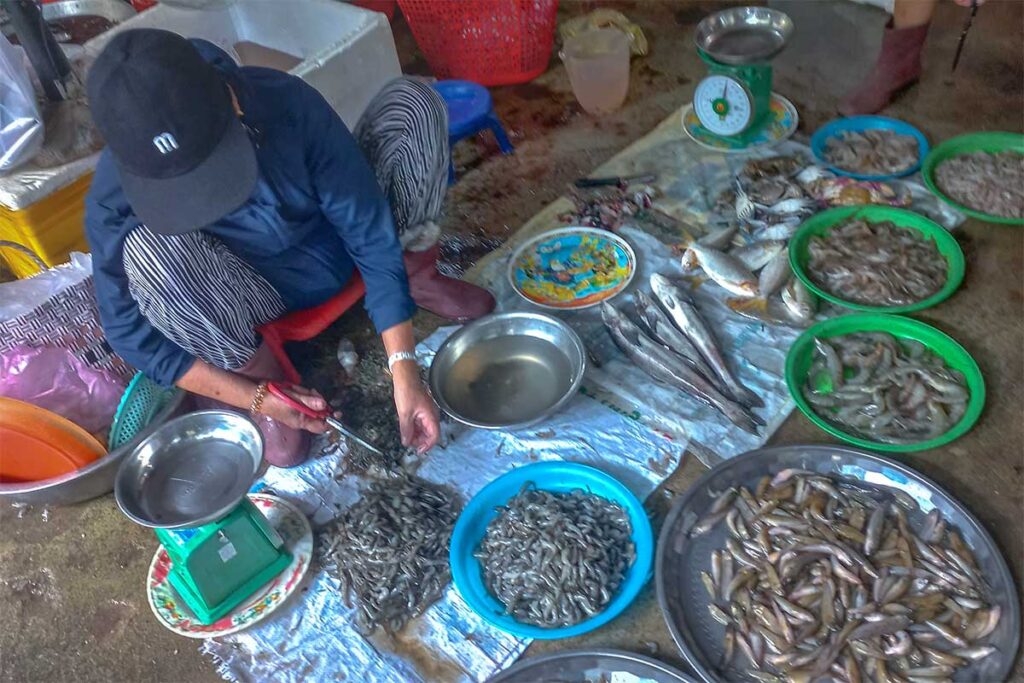
Another mainstay of Tan An Market is its meat and seafood area. Butchers sell cuts of pork and chicken laid out on tables, while fishmongers display trays of shrimp, clams, and freshly caught river fish. It’s a busy, practical scene that reflects how Hoi An families shop for their daily meals. For visitors, it can be fascinating but also confronting—the floors are often wet, the air smells of the sea, and nothing is hidden from view.
3. Local food and drinks
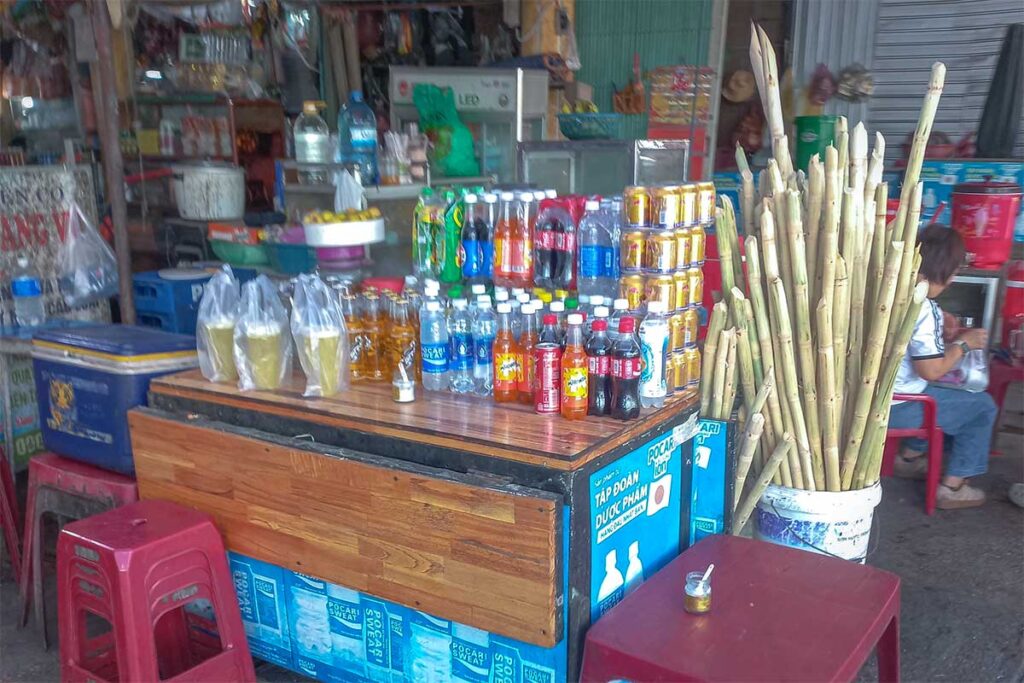
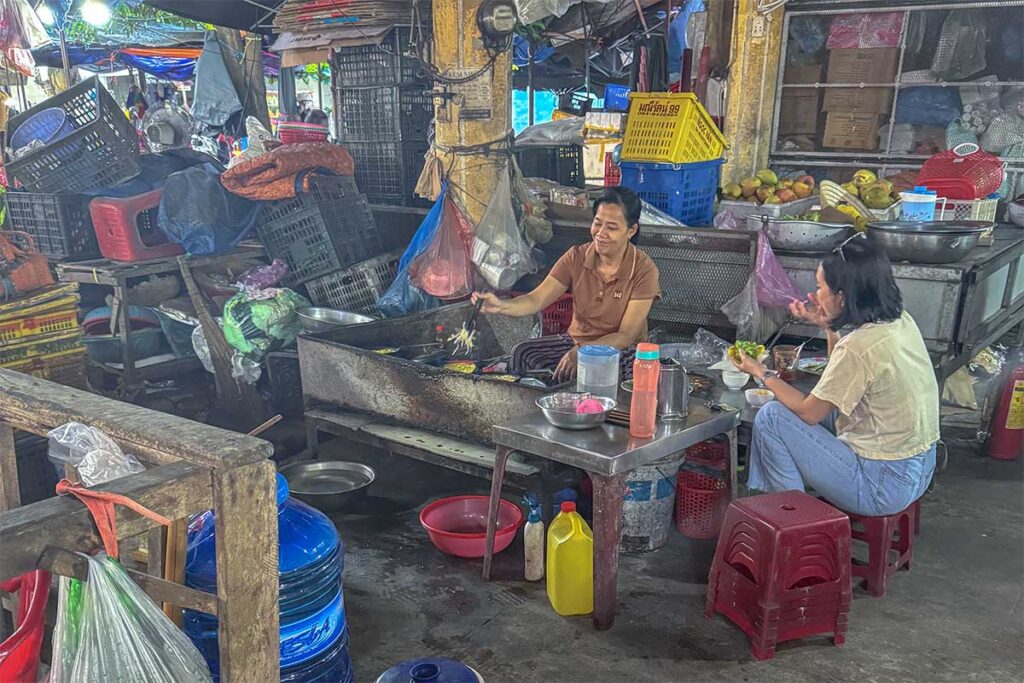
Scattered around the market are a few food stalls where vendors prepare quick dishes for shoppers. Noodle soups, fried snacks, and refreshing glasses of sugarcane juice are typical options. Eating here means sitting on small plastic stools at low tables, surrounded by the bustle of the market—a simple but authentic way to experience everyday life.
4. Household foods and everyday items
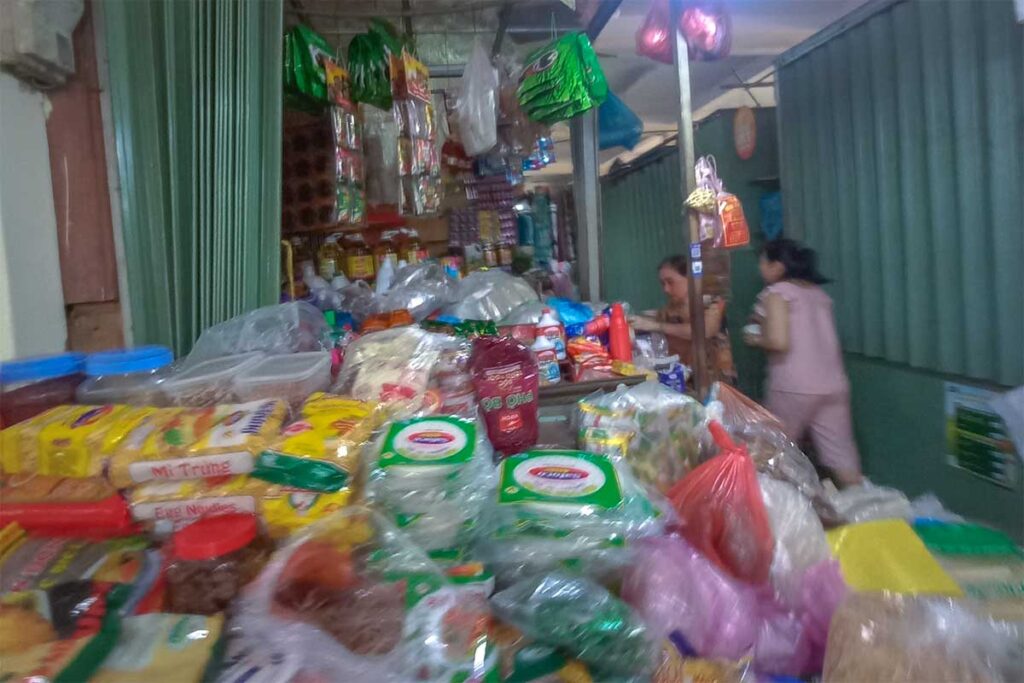
Beyond the food areas, stalls sell clothing, kitchen utensils, packaged groceries, and other practical items. This section is purely functional, catering to local households rather than tourists. It gives a fuller picture of the market’s role in the community: not a place to shop for souvenirs, but a vital stop for daily essentials.
Ong Cop Temple – Hoi An’s Tiger Temple
Right beside Tan An Market stands Ong Cop Temple, the small shrine that explains why locals call the area the “Tiger Market.” Its origins go back to the 17th century, when it was established as a communal temple for worshipping protective spirits and honoring village ancestors.
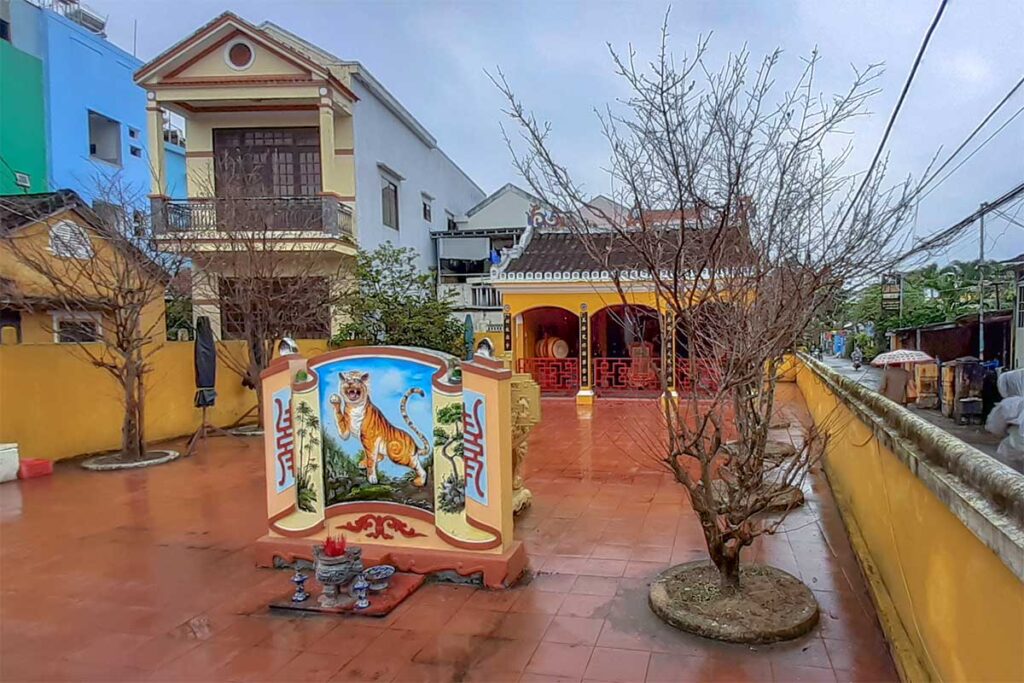
In Vietnamese folk belief, the tiger is seen as a powerful guardian figure, both feared and respected for its strength. At Ong Cop Temple, tiger imagery is used to symbolize protection against evil forces, giving the market and surrounding neighborhood a spiritual safeguard.
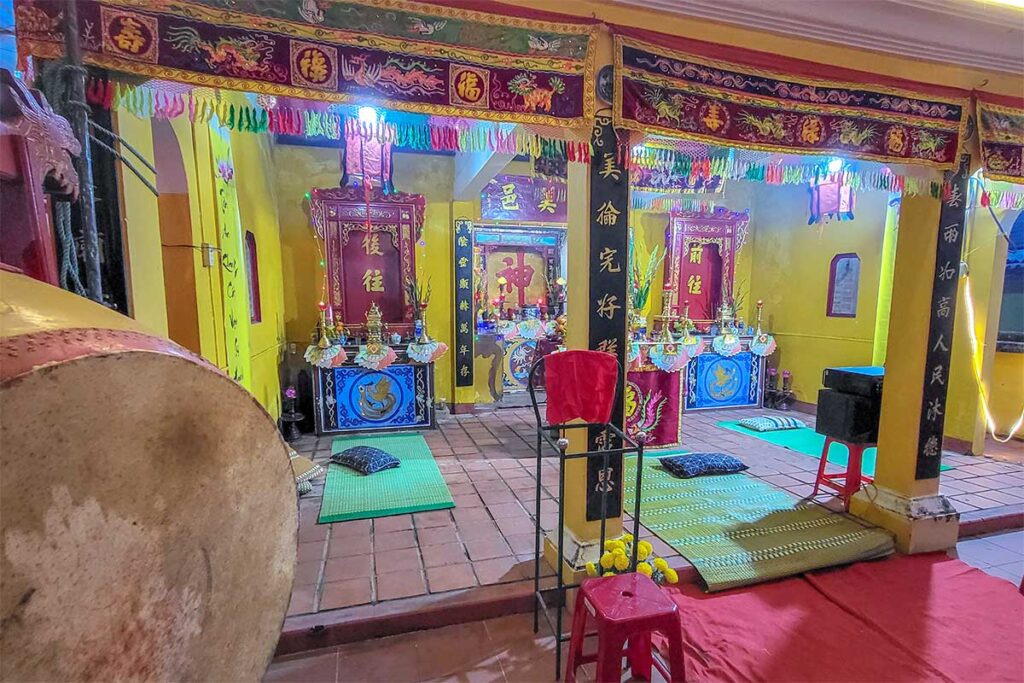
Today, the temple remains modest in size but continues to play a role in local life. The most important occasion here is the annual ceremony held on the 16th day of the first lunar month, shortly after Lunar New Year, when residents gather to give thanks to their ancestors and deities.
The temple also provides a striking contrast to the bustling market outside. While Tan An Market reflects commerce and daily survival, Ong Cop Temple serves as a quiet reminder of faith and tradition—a cultural anchor in the middle of Hoi An’s everyday rhythms.
Practical visiting information & Tips
Location & How to get there
Tan An Market is located about one kilometer north of Hoi An Ancient Town, close enough to reach on foot or by bicycle in under ten minutes. For those staying further away, taxis and electric buggies are easy options. From Da Nang, the market is around 30 kilometers away and can be reached in 45–60 minutes by car or motorbike.
Opening hours & Best time to visit
The market typically runs from around 5–6 am until early evening, closing between 6 and 7 pm. The best time to go is in the early morning when produce is at its freshest and the atmosphere is at its busiest, with locals rushing to shop for their daily meals.
What to wear & Conditions
Floors in the seafood and meat areas can be wet and slippery, so wear casual shoes with a decent grip. Lightweight, comfortable clothing is ideal, as the market can feel warm and crowded during peak hours.
Things to be aware of
For some visitors, the raw meat and fish sections may be confronting, and the overall market environment is not polished for tourism. It can be noisy, chaotic, and messy at times—part of its authenticity but not necessarily appealing for everyone.
Photography
Tan An Market is a good spot for candid street and market photography. Vendors, produce displays, and the mix of colors provide plenty of material. Be discreet and respectful; if you want close-up shots of people, it’s best to make eye contact or ask for permission first.
Money & Shopping
Bring cash, ideally in small denominations, as vendors do not accept cards. Bargaining is expected, but it happens on a small, local scale rather than aggressive haggling. There are no real souvenirs here, but you can buy fresh fruit or snacks for the experience. If you arrive by scooter, expect to pay a parking fee of around 5,000–10,000 VND.
Is Tan An Market worth visiting?
Yes, if you’re looking for an authentic glimpse of daily life in Hoi An. Tan An Market is where locals actually shop, and its unpolished character makes it very different from the more tourist-oriented Central Market in the Old Town. It’s a place to see real interactions, fresh produce, and the raw energy of a community market without the layers of souvenirs or staged experiences.
Not for everyone, though. The market can feel messy, noisy, and even chaotic, with wet floors, raw meat on display, and little attention given to appearances. It’s not “beautiful” in the way many visitors expect Hoi An to be, and if that puts you off, it may not be worth your time.
Comparison:
- Central Market – busier, more tourist-friendly, right in the Old Town, with a mix of local food and souvenirs.
- Tan An Market – entirely local, no tourist focus, offering a more genuine but less curated experience.
Because markets like Tan An exist in many towns and cities across Vietnam, it isn’t a must-see if your time in Hoi An is limited. That said, if you want immersion in the everyday rhythms of local life, Tan An Market offers exactly that—real, unfiltered Hoi An.
Other markets in Hoi An
Hoi An has several markets, each with its own character. While Tan An Market is among the most authentic and least touristy, you can explore other options to experience different sides of local life and commerce.
- Hoi An Central Market – The largest and most famous, right in the Ancient Town. It mixes local produce with tourist-friendly stalls, plus a busy food court serving local dishes.
- Hoi An Night Market – Best known for colorful lanterns, souvenirs, and evening street food, located on Nguyen Hoang Street by the river.
- Ba Le Market – A smaller neighborhood market in Cam Chau, offering a down-to-earth, residential feel without the tourist presence.
- Thanh Ha Fish Market – An early-morning seafood market west of the Ancient Town, lively with fresh catches and wholesale trade.
Quick tip: Want to compare Tan An with other local markets? Check out our full guide to the best markets in Hoi An for an overview of where to shop, eat, and experience local life.
